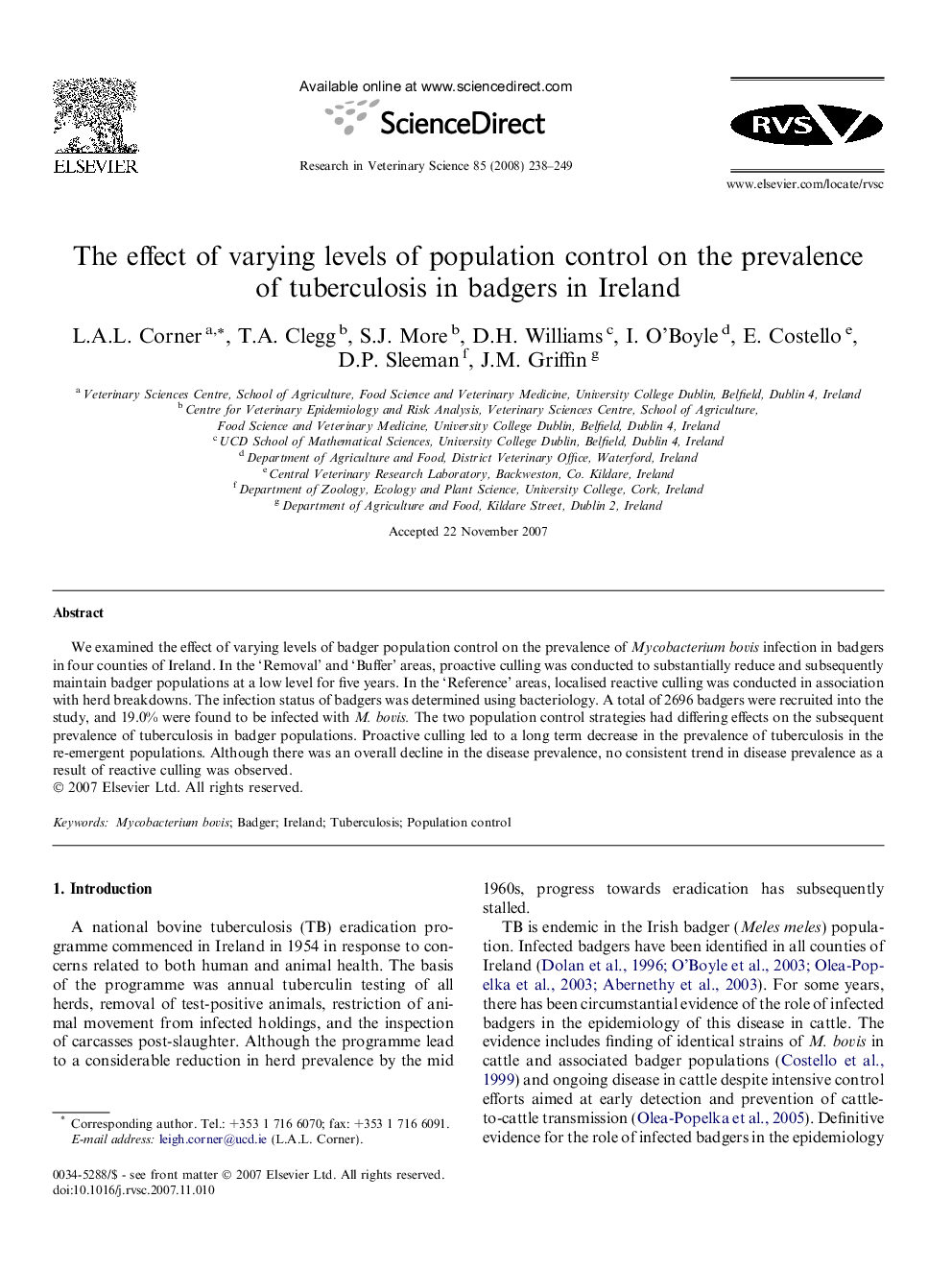| Article ID | Journal | Published Year | Pages | File Type |
|---|---|---|---|---|
| 2456149 | Research in Veterinary Science | 2008 | 12 Pages |
We examined the effect of varying levels of badger population control on the prevalence of Mycobacterium bovis infection in badgers in four counties of Ireland. In the ‘Removal’ and ‘Buffer’ areas, proactive culling was conducted to substantially reduce and subsequently maintain badger populations at a low level for five years. In the ‘Reference’ areas, localised reactive culling was conducted in association with herd breakdowns. The infection status of badgers was determined using bacteriology. A total of 2696 badgers were recruited into the study, and 19.0% were found to be infected with M. bovis. The two population control strategies had differing effects on the subsequent prevalence of tuberculosis in badger populations. Proactive culling led to a long term decrease in the prevalence of tuberculosis in the re-emergent populations. Although there was an overall decline in the disease prevalence, no consistent trend in disease prevalence as a result of reactive culling was observed.
